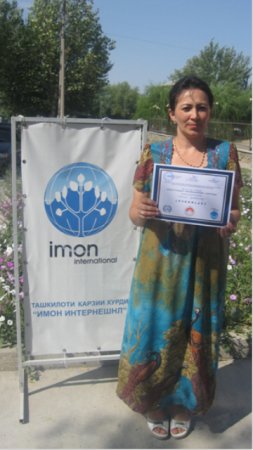The challenge to focus on The Work of Byron Katie for 21 days was worthwhile. I examined a painful thought that has been a thread running through my life, that my father didn’t care about me.
I subjected that belief to inquiry, and it did not hold up. My father did care about me. I know that deeply now. The way he chose to express it — nonverbally, without physical, verbal, or visual signs of affection, without playfulness, and pretty much without much eye contact or much facial expression at all — was not a way I understood or valued when I was young and first had this thought.
I realize now that he showed his caring by simply being there with his family and not somewhere else, supporting me from infancy through adulthood, reading aloud to his children, helping with homework, and creating order through daily rituals (dinner time, bath time, bed time). He wasn’t really that different from many men who were fathers in the 1950s and 1960s — who had been through sobering times (the Great Depression and World War II). He was not frivolous, not expressive, and a man who had lost his own father at age 9.
I took him for granted.
I did this challenge a bit differently than I initially envisioned doing it. I had thought that I would do one worksheet a day, answering the four questions and doing the turnarounds for 21 days.
That would have been extremely time-consuming. My blog posts would have been quite lengthy, and I fear you, dear readers, might have completely lost patience and interest.
So instead, I worked on one issue, my relationship with my dad, which even though he’s been dead for years, I still felt some tender sensitivity and pain about. I liked doing it slowly and deeply like this. Sometimes at Katie’s workshops, there just isn’t time to really go deep with my own stuff. This was satisfying and memorable. I feel like I got the process in my bones and now find myself asking, “Is that true?” and “What happens when I believe that thought?” Just noticing…
I have turned over that rock and examined the ground under it, the creepy-crawlies, the shadow, took a good thorough look, and then put the rock back and moved on.
Of course there are more rocks to investigate, but I can see that each time I do inquiry, the remaining rocks are perhaps fewer, lighter, and smaller.
And wow. Would I ever like to get to the bottom of how I create my own suffering with my thinking! That would require a lot of discernment. Speaking of which, this great quote on that topic came up today on Tricycle Daily Dharma:
| The fundamental aim of Buddhist practice is not belief; it’s enlightenment, the awakening that takes place when illusion has been overcome. It may sound simple, but it’s probably the most difficult thing of all to achieve. It isn’t some kind of magical reward that someone can give you or that a strong belief will enable you to acquire. The true path to awakening is genuine discernment; it’s the very opposite of belief. ~ Trinlay Tulku Rinpoche, “The Seeds of Life” |
 |
So yeah. Enlightenment comes through examining illusion, that is, using inquiry and discerning the truth. This is how it works in real life.
In filling out the worksheet, I went back to the last years I lived at home, when I was in high school, and how it was then between my father and me. I remembered yearning for his positive personal attention, and it never even crossing my mind to just ask him for it! Because “we didn’t do that in our family,” it wasn’t even in my realm of possibilities back then.
I am so grateful to have busted out of that prison. I’m not sure when that happened. At some point, I gained the quality of brashness. It usually works, too.
I think it’s a great idea for people to ask for attention when you need it. If the person who is asked can give it, fine, and if not, fine. There are always others, and of course, there’s the self. Doing The Work is a fine way to relate to the self. Quality time.
My relationship with my father, which transcends his death, has expanded. It’s become lighter and broader. I can consider other possibilities for his behavior than the narrow, joyless ones I laid on him.
This opens me up too. My hurting self, the wounded child, has healed (at least about this topic). It’s a memory now, in the past.
After having done the work, it doesn’t matter whether my father did or didn’t have Asperger’s Syndrome. That’s only a concept, just a theory to explain his behavior.
When I ask, “How do I react, what happens, when I think that thought?” I realize that it just doesn’t matter that much to me. I wonder more how he would have reacted had he known, fully aware that whatever I think is idle speculation, just opinion. It was his business, not mine.
I like to think that if he wanted help with it, which he never asked for, I would have gladly been willing to give it.
Just like he would have been glad to give me more attention, if I had asked for it.
People are like that, aren’t we.





